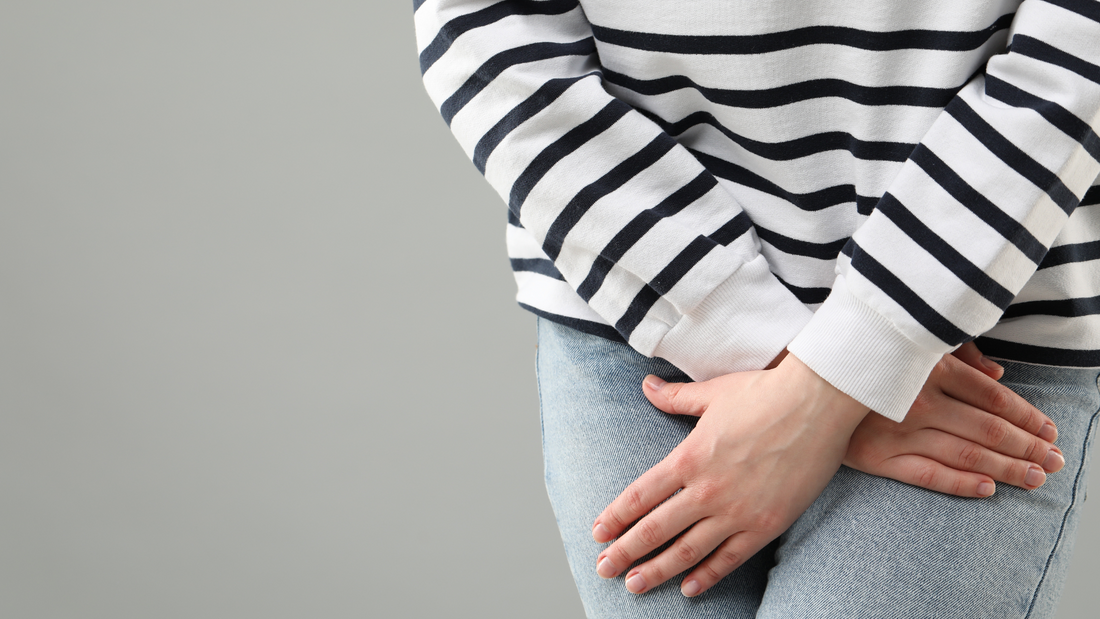
How your microbiota affects vaginal and urinary tract health
Microbiota is the collective term for all of the microbes (bacteria, viruses and fungi) in a specific area of the body. It is often called the microbiome (although this technically refers to the genetic information of the microbiota). Your urovaginal tract (including the vulva, vagina, urethra and bladder) has its own unique microbiota, as does each individual area, e.g., the vulva and vagina have different microbiota, but they influence each other, often sharing microbes. Various problems and infections can occur if these become unbalanced (1).
How does your urovaginal microbiota become unbalanced?
In most areas, specifically the gut microbiome, it is best to have a diverse microbiota, so a good mix of different microbes. In the urovaginal tract, however, it is generally best to have mostly lactobacilli (2) with Lactobacillus Crispatus being the one associated with good health. Lactobacilli thrive in the vagina where they use vaginal mucins as a food source. These lactobacilli fill the niche of the vagina, forming a layer that physically prevents other microbes from accessing vaginal cells (Basically taking up space. Imagine a fully booked restaurant with no seats.) to stop an invasion, disruption and potentially the onset of an active infection. Lactobacilli also produce lactic acid. This is why the optimal vaginal pH is quite acidic, around pH 4 - 4.5. This acid acts as a chemical barrier against pathogens. In order for Lactobacilli to work, it is therefore essential, they
i) reach the vagina, which can be tricky if taken orally,
ii) colonise healthy tissue (e.g. take a seat in the restaurant), and
iii) have ‘food’ to produce the low pH environment.
Colonisation and lactic acid production can be hindered during menopause when the tissue may be thinned, and irritated and hormone levels are low providing a less beneficial environment for lactobacilli to thrive.
The diagram below shows how bacteria from the gut can travel from the rectum to the vagina. This is very rarely a result of poor hygiene, but rather an unfortunate effect of anatomy. Women generally have a short urethra and a very short distance between the anus and vagina, with no external genitalia (like testicles) forming a physical barrier against pathogens.

 Why does Lactobacillus not protect against infections?
Why does Lactobacillus not protect against infections?
In an unfortunate twist of events, often the treatment of one infection can lead to further infections. Broad-spectrum antibiotics are medicines that kill a wide range of bacteria. These are prescribed for a host of infections all over the body. While they may target the bacterium that is causing the infection, they often also kill healthy and protective microbiota, such as lactobacilli in the vagina. It is very common to get Thrush, UTIs or BV following a course of antibiotics.
What can be done to protect my healthy microbiota?
1. Banerjee S, Robertson E S, Future perspectives: microbiome, cancer and therapeutic promise, Microbiome and Cancer p363-389, 2019
2. Ravel J, Gajer P, Abdo Z, Forney L J, Vaginal microbiome of reproductive-age women, Proc Nat Acad Sci USA 108:4680-87, 2010
3. Onywera H, Williamson A, Ponomarenko J, Meiring T L, The penile microbiota in uncircumcised and circumcised men: relationships with HIV and Human Papillomavirus infections and cervicovaginal microbiota, Front Med 7:383, 2020
4. Amabebe E, Anumba D O C, The vaginal microenvironment: the physiologic role of lactobacilli, Front Med 5:181, 2018
5. Cribby S, Taylor M, Reid G, Vaginal microbiota and the use of probiotics, Interdiscip Perspect Infect Dis 256490, 2008




